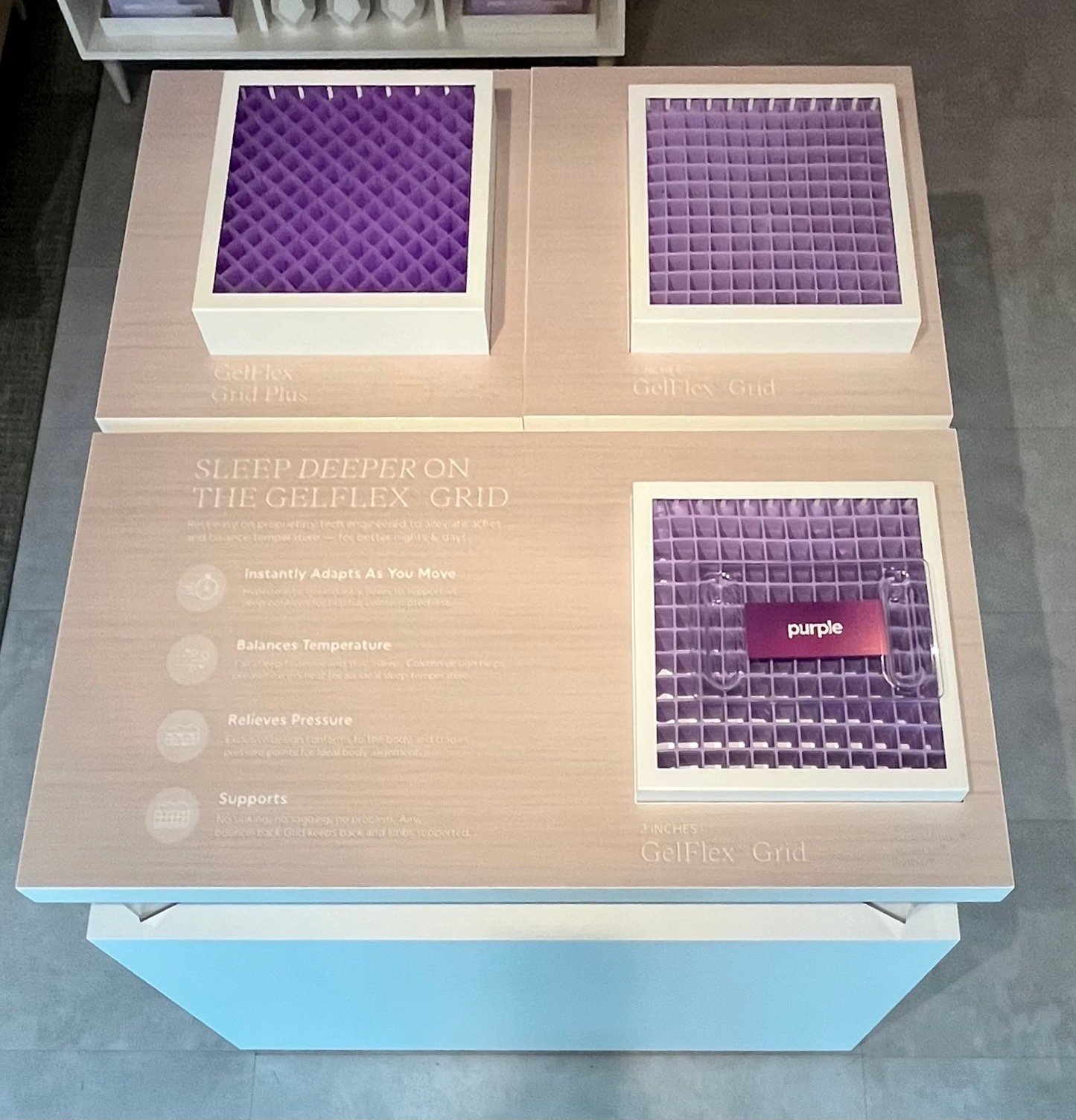
How To Test A Mattress In Store the Right Way [2025 Guide]
Testing a mattress is essential to finding the right one for your sleeping needs. The wrong mattress can be the difference between a good and bad night's sleep. But what should you look out for while testing one in-store to make sure you’ve found the right one?
Testing how a mattress feels while seated and lying down is important, as is knowing its materials and components. In this article, we'll go over what you should know before testing a mattress. We’ll also inform you on considerations to keep in mind, so you can find a mattress that will provide you with a good night's sleep for years to come.
What To Know Before Testing A Mattress In Store
When it comes to finding the perfect mattress, testing various options out in-store is an important part of the process. However, there are a few things you should keep in mind to make sure you get the most out of your testing experience.
Here’s what you need to know before doing your mattress testing in-store:
Material
Different mattress materials have varying properties that affect factors such as temperature regulation, support, pressure relief and motion transfer. All of these factors affect a mattress’ overall comfort level, so it’s important to learn what a mattress is made of.
At Purple’s showroom, you’ll get plenty of assistance and information about the benefits of Purple’s proprietary GelFlex® Grid and be able to experience the innovative pressure relief, airflow-maintaining technology in person.
Buying a mattress online instead of in-store? Read our guide on how to buy a mattress online so you know what to look for even when you don’t physically test your mattress.
Sleeping Position
Knowing your usual sleep position is essential when testing mattresses. Take note of whether you primarily sleep on your back, side, or stomach, or if you’re a combination sleeper who switches positions throughout the night. This will help you assess how well a mattress supports your body in your usual sleep position, ensuring extra comfort and neutral spine alignment for a better sleep experience.
If you don't know your usual sleep position, what position do you usually wake up in?
Physical Ailments
It's important to keep in mind any physical ailments or conditions you may have, such as sleep apnea or hip pain. These symptoms may be alleviated by certain mattress components and constructions designed to provide better support for specific conditions.
For example, if you have sleep apnea, which is a condition that causes you to stop breathing periodically during sleep, you may benefit from a mattress with an adjustable base. This type of base allows you to elevate your head and upper body, which can help reduce snoring and improve breathing. Acid reflux is another condition that can benefit from sleeping in an elevated position.
On the other hand, if you have back pain, you may benefit from a mattress that provides support for your hips and back and supports spinal alignment while also providing enough cushioning to alleviate pressure points. This can help prevent stiffness and soreness in the morning and improve sleep quality.
How To Test A Mattress
Wondering what steps to take to test a mattress for maximum comfort? Here are some tips on how to see if the mattress supports your body properly and keeps your spine in neutral alignment.
Start In The Seating Position
This is important if you like to read, watch TV in bed, or do other activities that require you to sit up in bed. First, sit on a mattress with your back against the headboard to check how the mattress feels in a seated position. Take a moment to examine how it supports your lower back and hips and note any other impressions. Remember that the mattress will feel very different sitting up vs laying down.
Lower The Mattress
Next, slowly lower onto the mattress and lie down in your preferred sleeping position. During this time, pay attention to any discomfort or other sensations you feel. Note how your pressure points feel – are you feeling relief?
Sleeping Position
Whether you sleep on your back, side, or stomach, it's important to test the mattress in the position you sleep in most often. Lie on the mattress for at least 10 to 15 minutes to give your body time to adjust to the feel of the mattress. The mattress should still push back slightly to support your body. Attune yourself to the sensation of your body and how it feels support and pressure from the mattress.
If you sleep with a partner, it's a good idea to have your partner also lie down on the mattress in their preferred sleeping position to see how the mattress responds to their movements. This will help you determine how the mattress reduces motion transfer and how well it supports both of you.
Spinal Alignment
Your spine should be aligned in a neutral position when you're lying on your back or side. This means that your spine should maintain its natural curve rather than be excessively curved or twisted.
If you feel that parts of your body are sinking too deeply or aren’t cushioned enough by the mattress, this may be a sign that the mattress isn’t at the right firmness level for your needs. Read our guide to find out if your mattress is too firm or too soft to support you properly during sleep.
In addition, be sure to pick the correct pillow to properly align your spine. Choosing a pillow that is too high or too low can negatively impact your sleep experience. See our guide on how to choose the right pillow for support.
Additional Considerations When Testing A Mattress
Testing your mattress may help you better determine how suitable it is for your sleeping needs. While sleeping position and support are important, there are a few additional factors to consider that will affect your sleep quality. Here are the additional factors to keep in mind when testing a mattress:
Matching Your Needs With Product Components
The materials used in your mattress will significantly impact the level of pressure relief and support it provides. Some of the most common components in Purple mattresses include GelFlex® Grid, foam layers, innerspring coils, and hybrid combinations of these materials. Each of these components has unique benefits and can provide a different sleep experience.
The GelFlex® Grid instantly adapts to your body for instant pressure relief and cushioning support.
Be sure to inquire with the sales representative about the mattresses' components and corresponding benefits . They can help guide you to the right mattress for your needs and preferences.
Support
Support is an important consideration because this is what keeps your spine in a neutral position throughout the night. It also provides pressure relief, improving sleep quality and overall comfort. Purple mattresses are designed to provide excellent support for a variety of sleep positions.
Purple’s proprietary GelFlex® Grid is a comfort layer made of hyper-elastic polymer which conforms to your body shape while maintaining its support. This helps distribute your weight evenly and prevents pressure from building up in high-tension points, providing support and pressure relief simultaneously.
Comfort
Comfort is made up of a combination of different factors, such as firmness, cushioning, and pressure relief. Different people have different perceptions of “comfortable” so it’s important to assess how a mattress personally feels to you.
The GelFlex® Grid which is a component in every Purple mattress creates a comfortable sleeping experience, as its flexible hyper-elastic polymer quickly adapts to support your pressure points. With thousands of air channels for increased airflow, the Grid provides a highly breathable and cool surface for a good night’s sleep.
Adaptability To Sleeping Position
A mattress should be able to adapt to your sleeping position, as different positions place different levels of pressure on different parts of your body. If a mattress can accommodate your usual sleep position, it will feel comfier and keep you from tossing and turning at night.
Purple’s GelFlex® Grid is highly flexible and responsive, providing customized support for different sleeping positions while also distributing your weight evenly, alleviating pressure points, and promoings proper spinal alignment for your typical sleeping position.
Temperature Neutrality
Temperature neutrality helps regulate your body temperature and prevent overheating during the night, which is a common sleep disrupter. A mattress that promotes temperature neutrality can help improve sleep quality and reduce discomfort caused by overheating or sweating.
Purple mattresses are proven to provide deeper sleep, decrease sleep disruption and sleep up to 4x cooler* than its competitors. They have over a thousand air channels, promoting temperature regulation to keep you cool and comfortable throughout the night. They also have breathable, moisture-wicking covers that help promote airflow and further enhance temperature neutrality.
Learn more about the ideal sleeping temperature.
Motion Transfer
Reduced motion transfer may be especially important for co-sleepers who want to avoid disturbing each other’s rest. A mattress that reduces motion transfer may help reduce nighttime disruptions, leading to better sleep quality and overall well-being.
If you co-sleep and worry about waking up your partner when you get out of bed, try a Purple mattress. Purple mattresses have a GelFlex® Grid made of hyper-elastic polymer, which helps absorb motion and reduce its transfer across the bed. Additionally, Purple mattresses have foam cores that provide extra support and stability, reducing motion transfer further.
Key Takeaways
Mattress testing is an important step in choosing the right one for your sleeping needs. A mattress’ materials, its components, and your sleeping position all affect how a mattress feels during testing.
Take note of any factors that may affect your choice – like if you’re a hot sleeper or if you have any physical ailments. By following the steps we suggested and noting the considerations listed above, you’ll have an easier time selecting a mattress that suits your unique preferences.
Also keep in mind other closely related products that impact your sleep experience. For example choosing bed sheets that are flexible and a pillow with the correct support.
If you want to try out a Purple mattress in-store, here’s how to find the nearest store so you can see for yourself which Purple model feels comfiest for you!


